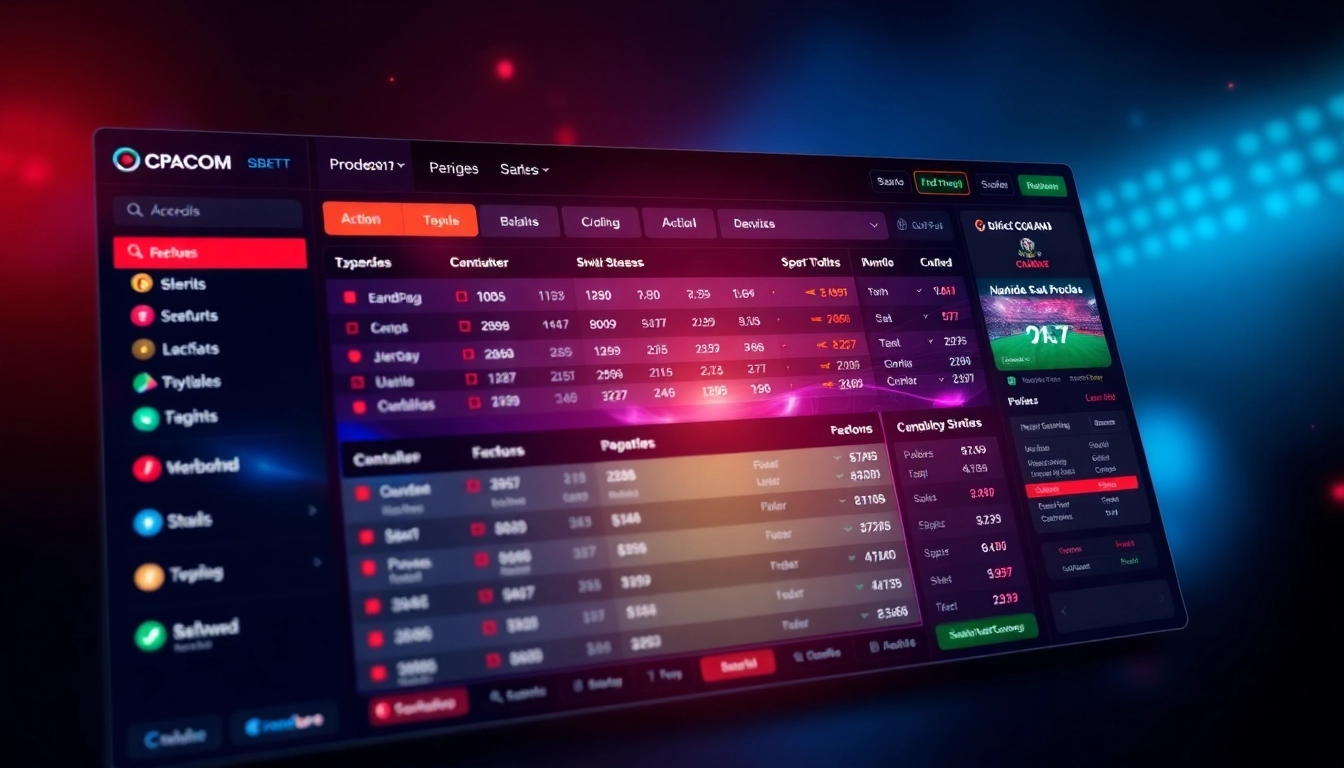Understanding Blockchain Technology: The Backbone of Modern Digital Innovation
In recent years, blockchain technology has emerged as a transformative force across numerous sectors, fundamentally altering how data is stored, transactions are conducted, and trust is established in digital ecosystems. As a shared, immutable digital ledger, blockchain offers unparalleled transparency, security, and decentralization—qualities that are increasingly vital in today’s interconnected world. For those keen to delve deeper, comprehensive resources are available, such as the blockchain technology guides, which break down complex concepts into accessible insights.
What Is Blockchain Technology? Definitions and Core Concepts
Blockchain technology is fundamentally a decentralized digital ledger that records transactions across a network of computers, ensuring that each entry is secure, transparent, and tamper-proof. Unlike traditional databases controlled by centralized authorities, blockchain distributes data across multiple nodes, making it resistant to single points of failure or malicious attacks.
At its core, blockchain consists of a series of blocks—each containing a list of transactions—that are cryptographically linked to one another in a chronological chain. This structure ensures that once a block is added, altering its data would require re-computing the hash for every subsequent block, which is computationally infeasible given proper security measures.
Leading industry experts describe blockchain as a shared, immutable digital ledger that not only authenticates transactions but also facilitates real-time asset tracking and data sharing among stakeholders. Its innovative approach supports secure, decentralized environments that are crucial for various applications, from cryptocurrency to supply chain management.
How Blockchain Operates as a Distributed Ledger
Blockchain operates as a distributed ledger by replicating and synchronizing data across multiple computers—referred to as nodes—within a network. This system ensures that every participant maintains an identical copy of the ledger, eliminating the need for a central authority and fostering trust through consensus mechanisms.
When a new transaction occurs, it is broadcasted to all nodes. These nodes then validate the transaction through consensus protocols such as Proof of Work (PoW) or Proof of Stake (PoS). Once validated, the transaction is grouped into a block, cryptographically secured, and added to the existing chain, making the history of transactions transparent and publicly verifiable.
This decentralized architecture enhances security by reducing vulnerabilities associated with centralized data repositories. Additionally, synchronization and transparency facilitate swift auditing, dispute resolution, and real-time decision-making across industries.
Key Features: Immutability, Transparency, Decentralization
- Immutability: Once recorded, data on the blockchain cannot be altered retroactively without network consensus, ensuring data integrity and reducing fraud.
- Transparency: Public blockchains enable anyone to verify transactions, fostering trust and accountability.
- Decentralization: The absence of a central controlling entity distributes authority across the network, diminishing single points of failure or manipulation.
These core features contribute to blockchain’s appeal, offering a level of security and openness that is redefining digital interactions. For example, in supply chain management, these features allow stakeholders to verify the provenance and authenticity of products in real-time, thereby reducing counterfeit goods and enhancing consumer trust.
Applications and Impact of Blockchain in Various Sectors
Blockchain in Finance: Securing Transactions and Assets
The financial industry has been an early adopter of blockchain technology, leveraging its capabilities to streamline payments, settlement processes, and asset management. Blockchain’s ability to facilitate secure, transparent, and instantaneous transactions has led to the rise of digital currencies such as Bitcoin and stablecoins that offer an alternative to traditional fiat currencies.
Major financial institutions employ blockchain to improve settlement times from days to mere minutes, reducing counterparty risks and operational costs. Decentralized finance (DeFi) ecosystems are further expanding this landscape by offering peer-to-peer lending, insurance, and asset management services without intermediaries.
Emerging Use Cases in DeFi and Digital Identity
Decentralized Finance (DeFi) is revolutionizing access to financial services by enabling users to borrow, lend, and trade assets directly from their digital wallets. Blockchain’s transparency and security underpin these platforms, removing barriers associated with traditional finance.
Simultaneously, digital identity solutions built on blockchain provide individuals with greater control over their personal data. These systems enable secure and verifiable identities, reducing fraud and simplifying onboarding processes across various sectors, from banking to healthcare.
Real-World Examples: Success Stories and Innovations
Major projects like Ethereum have pioneered smart contract frameworks that automate complex workflows, reducing reliance on intermediaries. Supply chain solutions implemented by companies like IBM and Maersk utilize blockchain to track shipments, authenticate products, and enhance transparency.
Genesis Block’s partnership with major retailers has enabled real-time tracking of goods, reducing counterfeit and improving consumer trust. Such case studies exemplify blockchain’s capacity to innovate conventional systems with scalable, secure, and efficient alternatives.
Implementation Strategies for Blockchain Adoption
Assessing Business Readiness for Blockchain Integration
Before adoption, organizations must evaluate their operational processes, technological infrastructure, and strategic objectives. Key questions include whether blockchain can solve existing inefficiencies, the data sensitivity involved, and the regulatory landscape.
Conducting feasibility assessments, pilot projects, and stakeholder analyses are essential steps toward understanding potential benefits and risks, ensuring a smooth transition from traditional systems.
Choosing the Right Blockchain Platforms and Technologies
Selecting an appropriate platform depends on scalability, security, interoperability, and specific use case requirements. Popular platforms include Ethereum for smart contracts, Hyperledger Fabric for enterprise solutions, and Binance Smart Chain for cost-effective transactions.
Evaluating factors such as consensus mechanisms, network speed, and developer support guides informed decision-making in platform selection.
Steps for Developing and Deploying Blockchain Solutions
The development process involves defining clear objectives, designing the architecture, coding smart contracts, and conducting thorough testing. Deployment requires securing the network, integrating with existing systems, and establishing governance protocols.
Post-deployment, ongoing monitoring, upgrades, and security audits ensure sustained performance and resilience against emerging threats.
Challenges and Future Trends of Blockchain Technology
Overcoming Security and Scalability Obstacles
Despite its strengths, blockchain faces challenges related to network scalability and security. High transaction fees and slow confirmation times have impeded widespread adoption of certain networks.
Regulatory and Compliance Considerations
As blockchain intersects with legal frameworks, compliance with regulations like GDPR, AML, and KYC remains critical. The evolving regulatory landscape necessitates proactive engagement with policymakers and adherence to data privacy and security standards.
Additionally, jurisdictions like the European Union are introducing frameworks such as the Markets in Crypto-Assets (MiCA) regulation to foster innovation while protecting consumers.
Future Trends: Interoperability and Enterprise Adoption
Looking forward, interoperability between different blockchain networks will be pivotal, enabling seamless asset and data exchanges across platforms. Cross-chain bridges and standardized protocols aim to facilitate this integrated ecosystem.
Furthermore, enterprise adoption is expected to expand as organizations recognize blockchain’s potential to optimize operations, reduce costs, and enhance transparency, especially in supply chain, healthcare, and finance sectors.
Measuring Blockchain Performance and ROI
Metrics for Evaluating Blockchain Implementation Success
Key performance indicators include transaction throughput (TPS), confirmation times, security incident frequency, and user adoption rates. Analyzing these metrics helps organizations assess whether their blockchain initiatives meet strategic objectives.
Cost-Benefit Analysis and Long-Term Value
While initial deployment incurs development and infrastructure costs, long-term benefits such as operational efficiencies, reduced fraud, and enhanced customer trust often outweigh expenses. Quantifying these benefits through comprehensive ROI models supports strategic decision-making.
Case Studies on Business Performance Improvements
Successful implementations, like Maersk’s blockchain-based shipping platform, have demonstrated reductions in paperwork and delays, saving millions annually. Similarly, banks utilizing blockchain for cross-border payments report faster settlement times and lower costs, validating its long-term value.














